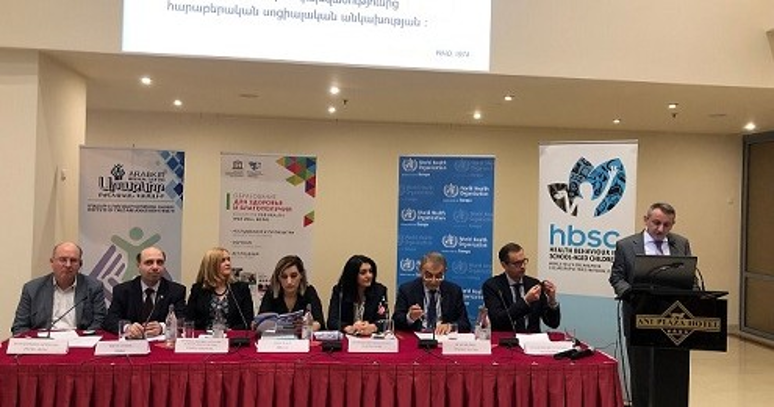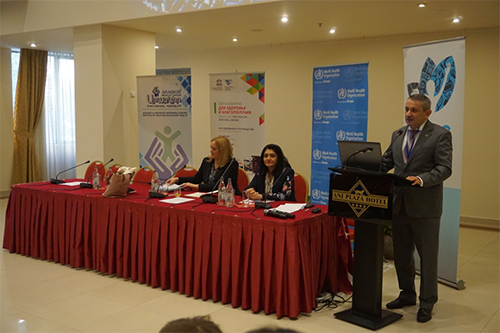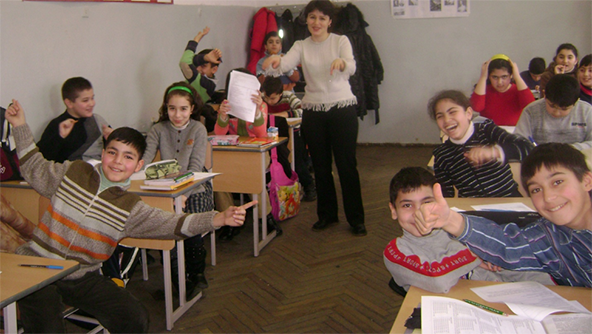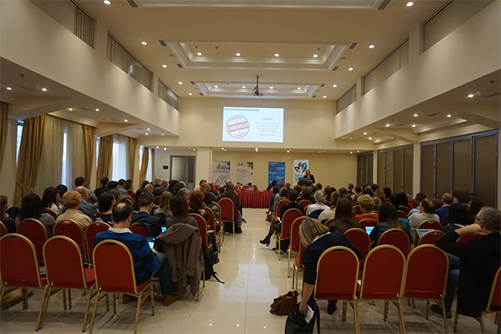Health Behaviour of School-aged Children (HBSC) survey focuses on studying the health and health behavior of adolescents and at disclosing the various factors – healthcare, education, social and family environments, which influence their health and behaviors. The survey enables collection of valid data on both national and cross-national levels, and allows making comparisons across all participating countries. HBSC survey has been conducted every four years under the aegis of WHO Regional Office for Europe in 51 countries.
The pilot study on Health Behaviour in School-aged Children (HBSC) was implemented with the support of UNICEF, 2005. In 2007, Armenia became an associate member of the European HBSC network. In 2009/2010, 2013/2014 and 2017/2018 the full-scale studies were conducted among 11, 13, 15, 17 year-old schoolchildren from all regions of Armenia. The relevant national reports have been published. Results and data made it possible to plan and implemented targeted programs in the field of school health.
In November, 2019 ICAH presented results of 2017/2018 HBSC study to professional public, including representatives of the relevant ministries, WHO country office and WHO European region, head of HBSC ICC and representative of UNESCO. On the same days HBSC International network autumn meeting was held in Yerevan which brought together more than 95 researchers from 40 countries of Europe, Middle East, Israel and Canada.
HBSC Armenian study revealed a number of issues of physical and mental health, peculiarities of eating habits and practices, lack of physical activity; prevalence of smoking among boys increases dramatically from 15 to 17 years of age – all these contributes to NCDs among adult population. The majority of adolescents acknowledged that they like their school and are satisfied with their life; family culture is also rather unique. Violence and mental health issues are serious matter of concern. Comparison with previous studies showed both positive and negative trends. Analysis of the survey data enables highlighting the directions in adolescent health and behavior that require most attention and further public health interventions in schoolchildren and young people.
Main
INSTITUTE OF CHILD AND ADOLESCENT HEALTH
HEALTH BEHAVIOUR OF SCHOOL-AGED CHILDREN: INTERNATIONAL STUDY
INSTITUTE OF CHILD AND ADOLESCENT HEALTH
Basic principles of our work
HEALTH POLICIES AND STRATEGIES
SCHOOL HEALTH. ADOLESCENT HEALTH AND DEVELOPMENT. HEALTHY LIFESTYLE
HEALTH BEHAVIOUR OF SCHOOL-AGED CHILDREN: INTERNATIONAL STUDY
CHILD DEVELOPMENT, EARLY INTERVENTION AND REHABILITATION OF CHILDREN WITH DEVELOPMENTAL DISORDERS
OUR PROGRAMMS
PEDIATRIC PALLIATIVE CARE IN ARMENIA
The Childhood Obesity Surveillance Initiative /COSI/
Publications
CONTINUOUS PROFESSIONAL DEVELOPMENT
Armenian Pediatric Association
OUR STAFF
OUR PARTNERS






 English
English
 Հայերեն
Հայերեն Русский
Русский